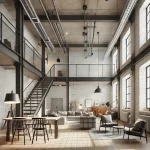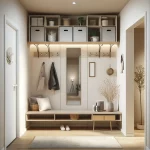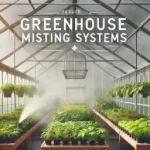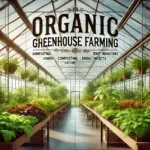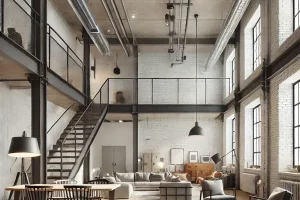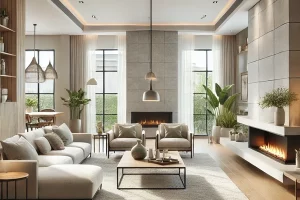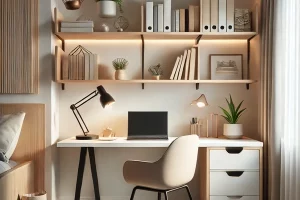An efficient greenhouse designs is crucial for growing healthy plants, saving money, and being kind to the environment. Let’s explore how you can create a greenhouse that works well for you.
Key Features of an Efficient Greenhouse Designs

An efficient greenhouse starts with a good layout. Think about the shape, size, and materials. The right design helps you save energy and makes the most of your space.
Shape and Size
The shape and size of your greenhouse affect how well it works. A round or dome shape helps keep the heat inside. The size should fit your needs. If you have a small space, a mini greenhouse might be perfect. If you have more room, a larger greenhouse can hold more plants.
Materials
Choosing the right materials is very important. Some common materials for greenhouse frames are aluminum, steel, and wood. Aluminum is light and doesn’t rust. Steel is strong but can rust, so it needs to be coated. Wood looks nice but needs to be treated to last long.
For the covering, you can use glass, plastic, or polycarbonate. Glass lets in a lot of light but can break easily. Plastic is cheap but doesn’t last as long. Polycarbonate is strong and lasts long, but it can be more expensive.
Improving Energy Efficiency

Keeping your greenhouse warm without wasting energy is important. Use passive solar energy, thermal mass, and consider adding solar panels. These steps help you save money and protect the planet.
Passive Solar Energy
Passive solar energy means using the sun’s heat without any machines. You can do this by placing your greenhouse where it gets the most sunlight. The south side of your house is usually the best spot.
Thermal Mass
Thermal mass means using materials that store heat during the day and release it at night. You can use water barrels, rocks, or bricks. Place them where they get a lot of sunlight during the day. At night, they will release the heat and keep your greenhouse warm.
Solar Panels
Solar panels can help you save a lot of energy. They turn sunlight into electricity. You can use this electricity to power heaters, fans, and lights in your greenhouse. This is a great way to use renewable energy and lower your energy bills.
Best Materials for Greenhouse Construction
Frames
For the frame of your greenhouse, you can use aluminum, steel, or wood. Aluminum is light and doesn’t rust, making it a good choice. Steel is strong but can rust, so it needs to be coated to protect it.
Wood looks nice and blends well with the garden, but it needs to be treated to last longer.
Covering Materials
Your greenhouse’s covering can be glass, plastic, or polycarbonate. Glass is clear and lets in a lot of light, but it can break easily. Plastic is cheap and easy to work with, but it doesn’t last as long as other materials.
Polycarbonate is strong and durable, making it a great choice for a long-lasting greenhouse.
Insulation Materials
To keep your greenhouse warm in winter and cool in summer, you need good insulation. Bubble wrap is a simple and effective option.
Ventilation and Greenhouse Efficiency

Good Ventilation
Good ventilation is key to keeping your greenhouse efficient. Ventilation helps control the temperature and humidity, which keeps your plants healthy.
Natural Ventilation
Natural ventilation uses openings like windows and vents to let fresh air in and hot air out. Place vents at the top and bottom of your greenhouse.
Hot air rises, so top vents let it out. Cooler air can come in through bottom vents. This keeps the air moving and helps your plants breathe.
Mechanical Ventilation
Mechanical ventilation uses fans to move air around. You can use exhaust fans to push hot air out and intake fans to bring cool air in. Fans help keep the air moving, which is good for your plants.
Solar Energy Benefits
Using Solar Energy
Using solar energy in your greenhouse is smart and sustainable. Solar energy helps you save money and protect the environment.
Solar Panels
Solar panels turn sunlight into electricity. You can use this electricity to power heaters, lights, and fans in your greenhouse. Solar panels can lower your energy bills and reduce your carbon footprint. This means you are using clean energy from the sun instead of relying on fossil fuels.
Solar Water Heaters
Solar water heaters use the sun’s energy to heat water. You can use this hot water to warm your greenhouse or to water your plants. This is a great way to use renewable energy.
Optimizing Water Usage
Water is precious, so it’s important to use it wisely in your greenhouse.
Drip Irrigation
Drip irrigation is a way to water your plants slowly and directly at the roots. This method uses less water and ensures that your plants get what they need. It also helps prevent diseases that can happen with too much moisture on the leaves. Drip irrigation systems can be set up to water your plants automatically, saving you time and effort.
Rainwater Harvesting
Rainwater harvesting is collecting rainwater to use in your greenhouse. You can collect rainwater from your roof and store it in barrels. This water can be used for irrigation, saving you money and conserving resources. Rainwater is free and natural, so it’s a great way to water your plants without using tap water.
Water Recycling
Water recycling means using water more than once. For example, you can collect runoff water from your greenhouse and use it to water your plants again. This helps save water and reduces waste. By recycling water, you can make sure that no drop is wasted and that your plants get the moisture they need.
The Role of Insulation
Insulation is very important for keeping your greenhouse efficient. It helps maintain the temperature inside, keeping it warm in the winter and cool in the summer.
Bubble Wrap
Bubble wrap is a simple and effective way to insulate your greenhouse. You can attach it to the inside of your greenhouse walls. It helps keep the heat in during the winter and keeps the cold out. Bubble wrap is cheap and easy to use. Just cut the bubble wrap to fit the size of your windows or walls and stick it on. This extra layer traps air and keeps the greenhouse warm.
Thermal Screens
Thermal screens are special curtains that you can use in your greenhouse. They open and close automatically to control the temperature. During the day, they open to let in the sunlight. At night, they close to keep the heat in. Thermal screens are very effective but can be more expensive than bubble wrap. They act like a blanket for your greenhouse, helping to keep it cozy.
Maximizing Space for Efficiency
Using your greenhouse space efficiently is important for getting the most out of it. There are many ways to organize and arrange your plants to make the best use of the space.
Vertical Gardening
Vertical gardening means growing plants upwards instead of outwards. You can use shelves, hanging pots, and trellises to grow your plants. This saves space and allows you to grow more plants in a smaller area. Vertical gardening makes your greenhouse look fuller and gives you more room to grow.
Tiered Shelving
Tiered shelving is a great way to organize your plants. You can have multiple layers of shelves, with plants on each layer. This makes it easy to care for your plants and makes the best use of your greenhouse space. Shelving helps you keep your plants organized and easy to reach.
Hanging Pots
Hanging pots are another way to save space. You can hang them from the ceiling or walls of your greenhouse. This allows you to grow plants without taking up floor space. Hanging pots add more growing space and can make your greenhouse look more beautiful.
Maintaining Consistent Temperature
Keeping a steady temperature in your greenhouse is important for your plants’ health. You can use different tools to make sure the temperature stays just right.
Heaters
Heaters help keep your greenhouse warm during cold months. You can use electric heaters, gas heaters, or even solar heaters. Place them where they can heat your greenhouse evenly. Heaters keep your plants warm and growing even when it’s cold outside.
Thermostats
Thermostats control the temperature automatically. You can set them to turn the heaters on and off at certain temperatures. This way, you don’t have to worry about checking the temperature all the time. A thermostat makes sure the greenhouse is always at the right temperature for your plants.
Fans
Fans are useful for keeping the air moving in your greenhouse. They help spread the warm air evenly and can also cool the greenhouse during hot months. Fans prevent hot spots and make sure all your plants get the right amount of heat and air.
Advantages of Automated Systems
Automated systems can make managing your greenhouse much easier. They take care of many tasks for you, saving you time and effort.
Automated Irrigation
Automated irrigation systems water your plants automatically. You can set them to water your plants at specific times and amounts. This ensures your plants get the right amount of water without you having to do it manually. Automated irrigation keeps your plants healthy and saves you time.
Climate Control Systems
Climate control systems help maintain the perfect environment for your plants. They can control the temperature, humidity, and ventilation automatically.
Lighting Systems
Automated lighting systems can turn lights on and off in your greenhouse. This is especially useful during the winter months when there is less sunlight.
Creating an efficient greenhouse design takes some planning, but the benefits are worth it. With the right design, materials, and systems, you can have a productive and sustainable greenhouse. Start making your greenhouse more efficient today!
